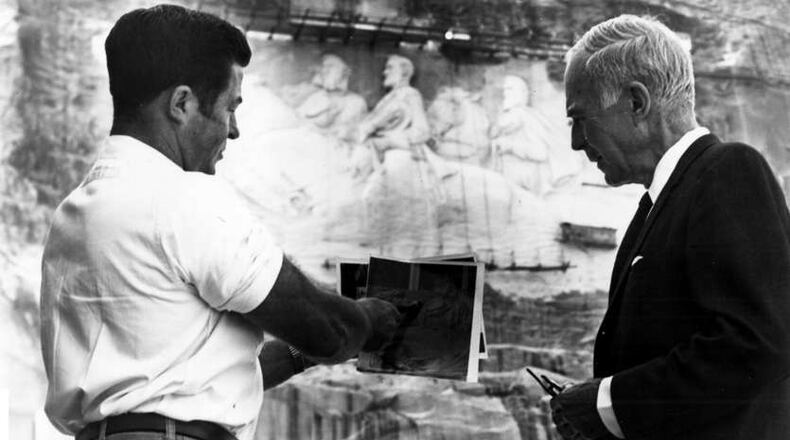Published Sept. 23, 2016
Roy Faulkner, the man responsible for the completion of Stone Mountain’s iconic and controversial Confederate memorial carving, passed away Friday, a family member confirmed.
He was 84.
A welder by trade, Faulkner joined the team at Stone Mountain in January 1964, more than 40 years after work on the carving started (and stopped) for the first time. He was originally tasked with building an elevator to help workers move up and down the mountain's granite face.
Faulkner quickly noticed the carvers' frustrations with their task, however, and suggested they create a shorter, more efficient torch powered by kerosene, oxygen and fire.
That worked, but the carvers continued to struggle to create something so massive without the ability to regularly step back and get perspective. Despite a lack of any artistic training, Faulkner had that ability — and he eventually went to the chairman of the Stone Mountain Monument Committee and asked to take over as chief carver.
He got the job.
Faulkner spent a total of eight years, nine months and 15 days on the mountain, completing the sculpture that, before his involvement, consisted only of basic figures of Gen. Robert E. Lee and Jefferson Davis. The carving was dedicated in 1970 but it took two more years to remove the rigging and scaffolding.
"I always keep in mind that I am carving the largest piece of sculpture anyone ever attempted, a memorial that will stand through eternity," Faulkner told Willard Neal, a reporter for what was then The Atlanta Constitution, in 1970. "You could hardly ask for greater satisfaction than that."
Faulkner was born and raised in Porterdale, a Newton County mill town, in 1932. He served with the United States Marine Corps in Korea and fathered four children. The Stone Mountain carving was the only piece of artwork he ever attempted.
It is the largest bas-relief sculpture in the world.
"The completion of the carving on Stone Mountain in 1970 can be attributed mainly to the talents and challenging work of Roy Faulkner," the Stone Mountain Memorial Association said in a statement sent to The Atlanta Journal-Constitution this week. "While Faulkner was not a trained sculptor or artist, his contribution cannot be overstated in completing the carving which is the largest piece of artwork of its kind in the world."
What, exactly, led to Faulkner's death was not immediately clear Friday night. He suffered a stroke in the 1980s and had been ill for several years.
He most recently lived with his daughter in Snellville.
Read more:
About the Author
Keep Reading
The Latest
Featured



